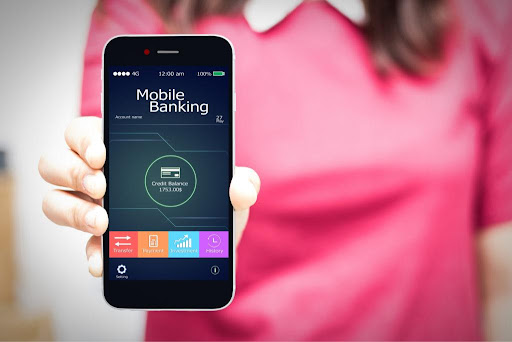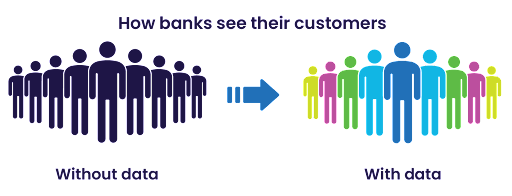June 3, 2021
A customer journey is the progression of interactions a consumer has with its bank, leading to a desired behavior. It is made up of touch points that cross into many areas of the bank. When a bank builds a smooth customer journey, they end up with satisfied, sticky customers. When the customer journey is riddled with friction, customers may be more willing to shop the competition for their next account or loan – or leave the bank altogether.
And there is no shortage of competition to choose from. The bank or credit union down the street with a higher rate or special offer. Digital banks with stunning interfaces and simple onboarding completed in a few taps. Non-banks like Amazon and Apple, already deeply embedded and accepted as part of our daily life.
Competitive pressures, growing customer expectations

According to research by Accenture, 4 of 5 bank consumers in the United States characterize their bank relationship as purely transactional. So, with so many other financial providers to choose from, what will stop them from shopping around and leaving your bank for something new or different?
Competitive pressures and growing customer expectations require banks to reimagine how they serve customers if they want to be an essential part of their lives. Mapping customer journeys is an important way to do that.
Customer journeys – where to begin?
Along a customer’s lifetime, traditional milestones like getting married, having a child, buying a house or entering retirement can trigger new financial needs. Other events that influence a consumer’s banking behavior might be a job promotion, new grandchildren, or starting a business. Financial products are a means to an end, not an end in and of themselves!
Accessing accurate customer data
So, the simple answer is that customer journeys start with rich data, powered by facts and not assumptions. Banks already hold an abundance of deeply personal, detailed information about their customers in their systems. However, for most, that data is not easily accessible. It’s stored in silos, spread across departments, inside legacy platforms that don’t share information with others.
Data may not flow easily across systems, but customers do.
Even reluctant bank customers had to transfer their banking to digital channels because of the pandemic. According to American Bankers Association, 71% of all Americans primarily use online and mobile channels for their banking needs, a sharp rise in adoption precipitated by the Coronavirus.
According to Mark Smith, president of Kitewheel, a marketing tech company, “the critical new thinking for banks is to not see branches and digital as different or competing ways of communicating with customers, but to understand that customers just see the bank and want to be able to use both physical and digital systems whenever they choose – and expect them to work together, in perfect harmony.”2
And yet, most banks do not have sightlines into customer behavior when it moves between channels. They can’t connect what a customer does in the branch one day with what they do at the ATM or in mobile banking the next. Data gaps can inadvertently lead to incorrect conclusions about what a customer wants or needs at different stages of the journey as well as missteps in personalizing those journeys for an individual. That’s a costly mistake.BCG estimates that for every $100 billion in assets a bank has, it can gain as much as $300 million revenue growth by personalizing its customer interactions. Clearly, personalization is a win-win for banks and customers.

Data leads to analytics-based personalization, with the end-goal of creating better customer experiences, greater loyalty and deeper relationships.
Leveraging technology to build customer journeys
Know your customer (KYC)….it is a simple goal, but not easily achieved. Most legacy core systems were not built to deliver a 360-degree view of customers. They do what they do very well… processing transactions, balancing ledgers, updating balances. They are reliable. But innovative? No. Do they deliver deep knowledge of customers or recommendations on what they might need next? No. It’s not what they are meant to do.
For banks who want to build customer journeys to drive innovation and respond to changing trends and customer expectations, they need flexibility, something core systems are not known for. They must be able to create products and pricing that is relevant to customers and do it quickly to respond to competitive pressures and customer needs. They need power AND agility.
How can banks leapfrog over sluggish legacy systems to view the entire customer relationship and create personalized offers and pricing that resonate with consumers?
Move product and pricing functions out of the core onto an external platform. Zafin was the first fintech to introduce external product and pricing, and we remain the market leader, empowering international and regional banks and credit unions to simplify their product and pricing management so they can create satisfying customer experiences.
Zafin’s cloud-native SaaS product and pricing platform is layered on top of the core system, outside of it, keeping it intact.
- Retail and business line executives can use the external product and pricing platform to bring new products and pricing variants to market quickly, in response to customer needs or competitive pressures. With little IT support.
- IT teams can empower business lines with technology that’s intuitive and supports their goals, in months. At the same time, it begins core modernization, hollowing out the legacy system, which simplifies future upgrades or migrations.
“API (application programming interface) connectivity allows financial institutions to innovate and integrate new services faster while providing lower costs for their customers.” – International Banker
Customer journeys vital to meaningful customer relationships
By building customer journeys, financial institutions can generate more revenue and bring in new customers – when they are paired with technology that leverages that valuable knowledge.
Serving up products and offers based on a customer’s unique behaviors, channel usage, and life stage ensures banks do not become merely a utilitarian necessity that can be easily replaced. Instead, banks become true financial partners. By making product and pricing recommendations that are in the best interest of their customers, the relationship becomes more meaningful, and more enduring over time.
What value are insights if your bank cannot act upon them? This is where legacy technologies are a significant inhibitor to market impact. When your customer is making key financial decisions, your bank needs to be prepared to sell and serve in a timely, relevant way—through any channel the customer prefers.
For more detail on the importance of building customer journeys, read our Next Generation Banking: Why Customer Journeys Matter white paper.
Infographic: Mortgage customer journey in action
Infographic: Small business customer journey in action
Founded in 2002, Zafin offers a SaaS product and pricing platform that simplifies core modernization for top banks worldwide. Our platform enables business users to work collaboratively to design and manage pricing, products, and packages, while technologists streamline core banking systems.
With Zafin, banks accelerate time to market for new products and offers while lowering the cost of change and achieving tangible business and risk outcomes. The Zafin platform increases business agility while enabling personalized pricing and dynamic responses to evolving customer and market needs. Zafin is headquartered in Vancouver, Canada, with offices and customers around the globe including ING, CIBC, HSBC, Wells Fargo, PNC, and ANZ.